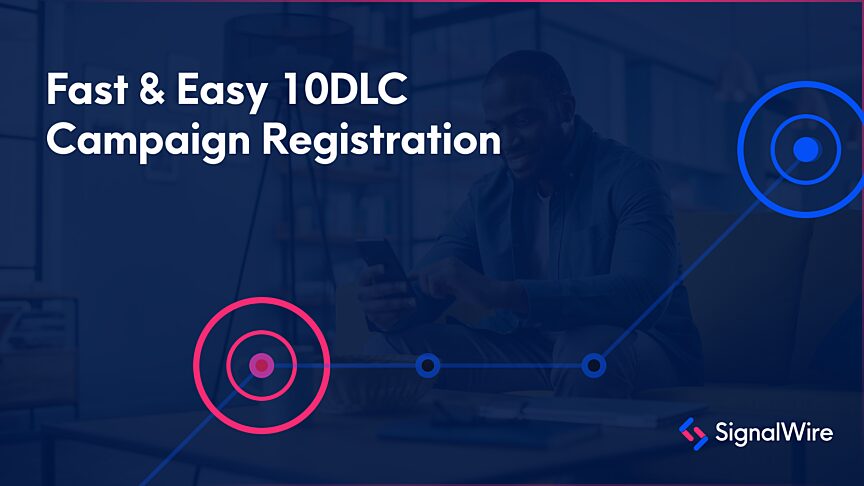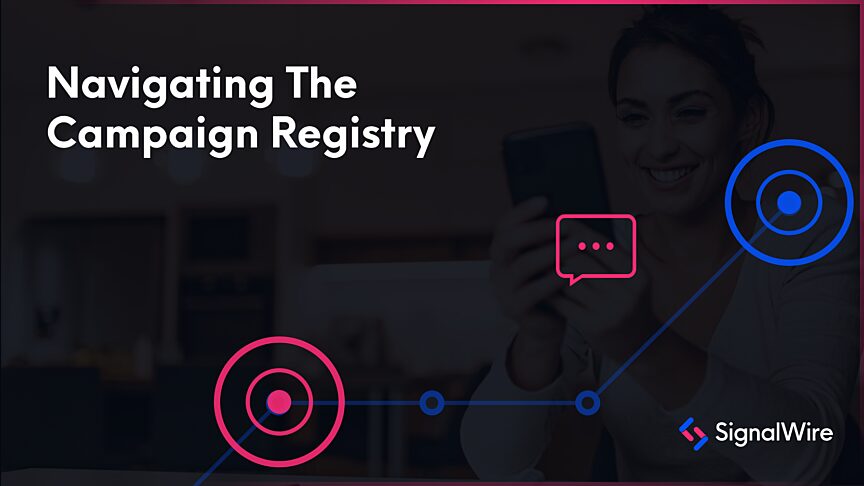The ever-changing regulations in the telecom industry can be overwhelming, but at SignalWire, we believe in being as transparent as possible. When it comes down to deciding how to implement your messaging communications strategy, every use case falls under two major categories: either your application is interacting with your users, or a human being is interacting with your users.
Each category requires a different type of phone number. 10 digit long codes (or 10DLC) are standard U.S. phone numbers, while short codes are special 5-6 digit commercial grade numbers equipped with unlimited throughput.
So which type of number do you need? That depends on your desired use case. Short codes are best when an application is sending out the same SMS to many different people in any commercial grade capacity (application-to-person, or A2P), while long codes can be better for small-scale two-way communication.
Think of it like this: when you’re playing the Legend of Zelda, Link starts out with a standard sword. This is like your 10 digit long code. This sword can do what you need it to do (send SMS) but only on a very small scale. You can text back and forth with customers, but it doesn’t have enough power to send out high-volume messaging to many different users.
As your company grows, you’re going to need the Magical Sword (aka, your short code). This doubles your power and grants you unlimited throughput! Now you are able to reliably communicate with customers in an automated way that scales with you as your business grows. You’ll be saving Zelda in no time!
Let’s consider a few factors that will help us identify which type of number is best for your business.
Throughput
In any use case that involves sending high-volume messaging, short codes are hands down the best solution because they were specifically designed for this. If you step outside of service providers’ strict guidelines messages per second or per day, your number is going to be blocked or even suspended.
Short codes, on the other hand, have unlimited throughput and can send more messages faster and with significantly higher reliability.
There are many examples of common short code use cases. If your company wants to send out weekly coupons or updates to customers, short codes are a great option. You can also send notifications to your users, integrate 2FA security into your application, conduct polls, text to win sweepstakes, internal employee alerts, and more.
Professionalism
When it comes to commercial grade messaging, the industry standard is steadily moving towards short codes. Almost every big company is using them and they can be easily spotted in a variety of use cases.
Restaurants display them on menus so that customers can reach out for coupons, TV ads post them on commercials and businesses pharmacies use them to send prescription notifications.
Customers expect to see a short code when interacting with businesses and using one yourself will present your company in a more professional light. Short codes also give you the freedom to choose your own number, which can help your branding efforts. For example, you can choose meaningful numbers that translate to a certain word or fun digits that customers will associate with your business, like Twitter and 40404!
Visibility
Short codes are also more effective when it comes to users remembering who you are. As the name suggests, 10 digit long codes have ten digits and are much more difficult to remember. 5 digits are easier to remember, and removes the barrier to entry when customers type your number into their phones, which increases the odds that users are going to interact with your company.
Customer Service
If your customer service solution involves automation, short codes are going to be the right solution for you. They allow you to set up automated interactions between customers and your application, for example, sending out important updates or connecting them to proper documentation.
Long codes are meant for interpersonal communications and are better suited for call centers or internal networks. If you want your customer service representatives texting one on one with a customer, a long code could be an option because they allow you to use one consistent number for all channels to text, call, and fax from.
Ease of use
Short codes take longer to set up because service providers require a thorough screening process. While a long set up time can be frustrating, the wait is necessary because this process is what guarantees you infinite throughput.
Once your service provider is familiar with your traffic, they are never going to mark your messages as spam and will never stop your messages from being sent. Leasing a short code can be a complicated process on your own, but SignalWire’s platform makes acquiring and connecting your short code as easy as possible with the help of our outstanding support team and easy-to-use SMS APIs.
There is also a 10DLC registration process for A2P 10DLC. A long code can be a better option because setup is much quicker through The Campaign Registry.
The only catch is that you are going to need to monitor your traffic to make sure that it never gets high enough to make service providers suspicious that you are a bot, and if it is, it may be time to start looking into short codes. At SignalWire, we have plenty of resources available to make sure your messaging campaign will be successful.
Cost
Because of the extensive screening process, and because there are fewer numbers available, short codes cost more to own. These costs are constant throughout every provider and are priced at an industry standard. While nobody enjoys spending money, most people hate spam (including us) and we appreciate that this process keeps our channels clean.
This pricing and these screening measures allow us as users to control what SMS content is allowed in our inboxes and prevents an overrun of unsolicited advertisements like we’ve seen with email and robocalling.
Even with the higher price point, at SignalWire we believe that communication is a right of the modern age. Our short code messaging offering remains the lowest you can find in the industry and will continue to be so.
Check our pricing page for up to date pricing. Short code lease rates, carrier activation & pass-through rates apply. Contact our sales department (Phone: +1.650.382.0000) for more information.
When looking to purchase a new number, your use case is what’s going to dictate what type of phone number you need. Any time your application is interacting directly with users, a short code is the best solution. If you need a multifunctional number dedicated to conversing with customers or employees one on one, a long code could be even better.
If you have any questions about 10DLC, short codes, or registering a campaign, stop by our Community Slack or our Forum to connect with SignalWire's team of messaging experts!


